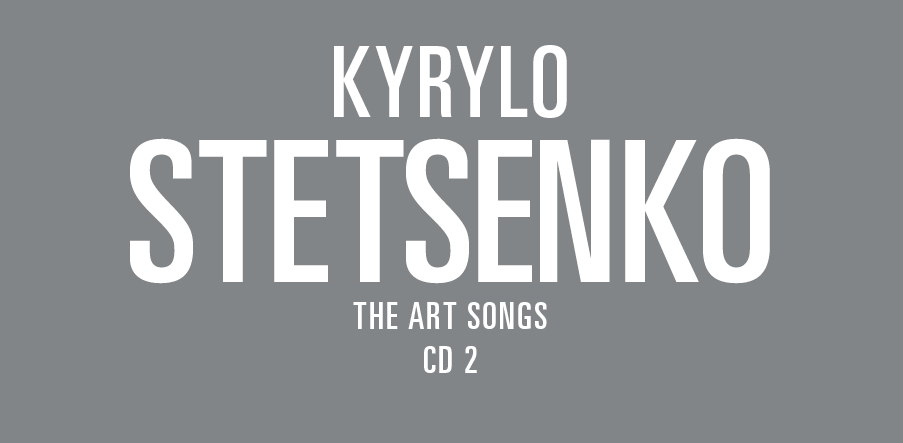Kyrylo Stetsenko
Click on the title of each song to download the linked zip file which includes both pdf and .sib. If you wish to use the .sib files in the web browser you will have to have installed and turned on the current version of Scorch for the web. You can download it here Sibelius First. All links to the Scorch web plug-in and the Scorch iPad app are also available at the bottom of each composers section. Click the appropriate button and follow the instructions to download and install the version of scorch you would like to use.
All songs are free to download and perform, so kindly consider making a donation of $5, $20, $50 or whatever you can, to support and sustain the work of the Ukrainian Art Song Project.
To download a song:
Click the link with the name of the song which will download a zip file.
Open the zip file and then the subfolder with the name of the song.
Open the file with the format you wish to work with - either PDF or Silbelius. If you want to keep the file, ensure you save it to a local drive.
For further information about downloading the scores and also using the Scorch plugin or app to play and transpose the scores, please click below.
KYRYLO STETSENKO
Kyrylo Stetsenko was born in central Ukraine. His father was a painter of icons and his maternal uncle was an Orthodox priest. At age 10, Kyrylo was taken by his uncle to Kyiv to study art. There, he enrolled at Saint Sophia's Church School and later at the Seminary. In school Kyrylo studied the masters of Ukrainian church music Dmytro Bortniansky, Maksym Berezovsky, Artem Vedel, and others. He also met Mykola Lysenko, the most important Ukrainian composer of the time, and participated in several ethnomusicological expeditions. Completing his studies in 1903, Stetsenko chose not to become a priest. Instead, he began working as a music teacher, music critic, church conductor and composer.
Stetsenko has to his credit 42 art songs, over 100 sacred and secular choral pieces, including two liturgies and a requiem, and music to a dozen stage works. Political events constantly affected the composer's life. When the Russian Revolution of 1905 fanned the flames of independence in Ukraine, Stetsenko published the Ukrainian national anthem and other patriotic songs. Although the authorities could not prove his complicity, he was nevertheless exiled from Kyiv in 1907. By 1909 he managed to return to the city but political and economic pressures forced him to leave one year later. In 1911, urged by his uncle, Stetsenko decided to become an Orthodox priest. Financial security, however, came at a price. The composer was required to serve in an obscure village in south-western Ukraine, far from the cultural life of Kyiv. There, in his self-imposed exile, Stetsenko weathered the political storm of World War I.
As soon as the Russian Revolution of 1917 began, Stetsenko immediately returned to Kyiv. When the Ukrainian National Republic was declared, Stetsenko was appointed head of the Music Section in the Ministry of Education. Two national choirs were created. One choir, led by composer Oleksander Koshyts, toured Europe and North America to promote Ukraine as an independent nation. The other, led by Stetsenko, toured at home to promote national unity. With the Bolshevik takeover of Ukraine in 1920, the Koshyts choir was stranded abroad. Meanwhile, Stetsenko's choir was disbanded by the Communists and the composer again abandoned Kyiv to work as a village priest south of the city. As political repressions were renewed against Ukrainians, famine and disease began to spread. Kyrylo Stetsenko died of typhus while tending to the sick during an outbreak of the disease in the spring of 1922.
KYRYLO STETSENKO CD 1
KYRYLO STETSENKO CD 2
To download these tools and for further instruction on their use, click on the links below:







